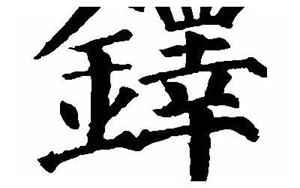赤经(赤经赤纬是什么意思)
赤经和赤纬:天文初学者应该了解的天体坐标
英语科技类阅读系列第10篇 —天体坐标
关注 头条+西瓜+抖音号: 杨老师STEAM教育
Category: Space
Text: 1006 words
Right ascension & declination: celestial coordinates for beginners
赤经和赤纬:初学者的天体坐标
Once you hold the golden keys of right ascension and declination, finding your way around the sky is almost as easy as finding your way around town.
一旦你掌握了赤经和赤纬的金钥匙,在天空中找到你的路几乎就像在城镇中找到你的路一样容易。
Sooner or later every novice skywatcher runs into the terms RA and Dec., short for right ascension and declination. When I got started in astronomy at age 11, they were a little scary. Then I realized they were just numbers like latitude and longitude, except applied to the stars.
每一个天文观测者迟早都会遇到RA和Dec. 这两个术语,是赤经和赤纬的缩写。当我11岁开始学习天文学时,它们有点吓人。然后我意识到它们只是像纬度和经度一样的数字,只不过适用于星星。
LATITUDE & LONGITUDE 纬度和经度To find anyplace on the globe of Earth, you only need to know its latitude, the distance in degrees north or south of the equator, and longitude, the distance in degrees east or west of the prime meridian. The prime meridian is an imaginary line that runs through the Royal Observatory in Greenwich, United Kingdom, and extends to the North and South Poles. It defines the zero (0°) longitude line just as the equator defines the 0° latitude line.
要想找到地球上的任何一个地方,你只需要知道它的纬度,即赤道以南或北纬的距离,经度,即本初子午线以东或以西的距离。本初子午线是一条假想的线,穿过英国格林威治的皇家天文台,延伸到南北两极。它定义0°经线,就像赤道定义0°纬度线一样。
Each city has a unique latitude and longitude. Take Tuscaloosa, Alabama, for example, which is located at latitude +33.2° north, longitude 87.6° west. Or Wonglepong, Australia, situated along that continent's east coast at –27.0° south, 153.2° east. A negative sign in front of the latitude indicates south and a positive sign north. Every location, whether it be a city, airport, or even your own home or apartment building lies somewhere on the worldwide coordinate grid (below), its location fixed by two numbers.
每个城市都有独特的经纬度。以阿拉巴马州的塔斯卡卢萨为例,它位于北纬33.2度,西经87.6度。或者澳大利亚的翁乐邦,位于该大陆的东海岸,南27.0,东153.2。在纬度前面的负号表示南,正号表示北。每一个位置,无论是一个城市,机场,甚至是你自己的家或公寓建筑,都位于全球坐标网格(以下)的某个地方,其位置由两个数字固定。
Each degree of latitude is equal to about 111 kilometers on Earth's surface. For precision we break down degrees into either fractions of a degree or divisions called minutes and seconds of arc. There are 60 minutes in one degree and 60 seconds in one minute. Tuscaloosa's precise location is +33° 12′ (minutes) 35″ (seconds) north, 87° 34′ 9″ west.
纬度的每一度大约相当于地球表面的111公里。为了精确起见,我们把度数分解成度数的分数,或者分解成弧的分和秒。1度等于60分钟,1分钟等于60秒。塔斯卡卢萨的精确位置是北纬33度12分35秒,西经87度34分9秒。
RIGHT ASCENSION & DECLINATION 赤经和赤纬Like cities, every object in the sky has two numbers that fix its location called right ascension and declination, more generally referred to as the object's celestial coordinates. Declination corresponds to latitude and right ascension to longitude. There are no roads in the sky, so knowing an object's coordinates is crucial to finding it in your telescope.
和城市一样,天空中的每一个物体都有两个确定其位置的数字,即赤经和赤纬,这两个数字通常被称为物体的天体坐标。赤纬对应于纬度,赤经对应于经度。天空中没有道路,所以知道一个物体的坐标对于在望远镜中找到它是至关重要的。
Let's use our imaginations and picture the latitude–longitude grid on the planet as the surface of a flexible, transparent soccer ball. If you could pump the ball up into a gigantic sphere centered on the Earth, you'd look up and see lines of latitude and longitude imprinted on the sky. The equator, which marks the 0° latitude line, now circles the sky as the celestial equator, while the north and south celestial poles hover over either end of the planet's polar axes.
让我们发挥想象力,把地球上的经纬度网格想象成一个灵活、透明的足球的表面。如果你能把这个球挤压到一个以地球为中心的巨大球体中,你会抬头看到天空中印着的经纬度线。标出0纬度线的赤道现在作为天体赤道环绕天空,而南北天体两极则在地球极轴的两端盘旋。
Viewed from Earth's equator, the celestial equator begins at the eastern horizon, passes directly overhead and drops down to the western horizon. Since we're inside a sphere, it would continue around the backside of the Earth as well.
从地球的赤道上看,天赤道从东方地平线开始,直接从头顶下降到西方地平线。因为我们是在一个球体内,所以它也会继续绕着地球的背面。
From mid-latitudes, the celestial equator stands midway between the horizon and overhead point, while from the poles the celestial equator encircles the horizon. Anything north of the celestial equator has a northerly declination, marked with a positive sign. Anything south of the equator has a negative declination written with a negative sign. For instance, Vega's declination is +38° 47′ 1″, while Alpha Centauri's is –60° 50′ 2″. One star is north of the celestial equator and the other south. Can you guess the declination of the north celestial pole? If you said +90°, you're already getting the hang of this.
从中纬度出发,天赤道位于地平线和头顶点之间,而从两极出发,天赤道环绕着地平线。在天赤道以北的任何地方都有向北的赤纬,标志着一个积极的信号。赤道以南的任何地方都有一个负赤纬,上面写着负号。例如,织女星的赤纬是+38 47 1,而半人马座阿尔法星的赤纬是 -60度50分 2秒。一颗星在天赤道的北边,另一颗在南边。你能猜出北天极的赤纬吗?如果你说+90°,你已经得到了答案。
While we use a physical location on Earth as our reference for longitude, what reference do we use for right ascension? Where is the 0° mark in the sky separating east from west? Astronomers use the spot the Sun arrives at on the first day of spring, called the vernal equinox. Presently, it's located in the constellation of Pisces, the Fish. The sky can be treated as a clock, since it wheels by as Earth rotates, so the zero point of right ascension is called "0时" for "zero hours." Unlike longitude, right ascension is measured in just one direction — east. Because there are 24 hours in a day, each hour of right ascension measured along the equator equals 1/24th of a circle (360° divided by 24) or 15°. That's a little more than one-half the width of the W-shaped constellation Cassiopeia.
当我们使用地球上的物理位置作为经度的参考时,我们用什么作为赤经的参考呢?天空中分隔东西的0°记号在哪里?天文学家利用太阳在春天的第一天到达的地点,称为春分。目前,它位于双鱼座。天空可以当作一个时钟,因为它随着地球的自转而转动,所以赤经零点被称为“0”,意为“零时”。 与经度不同,赤经只以一个方向——东——来测量。因为一天有24小时,沿赤道测量的每一小时右提升等于圆的1/24(360°除以24)或15°。这是W形仙后座宽度的一半多一点。
In keeping with right ascension's time theme, hours are subdivided into minutes and seconds, and are even written out as minutes (m) and seconds (s). Let take the North Star for example. Polaris is located at RA 2h 41m 39s, Dec. +89° 15′ 51″. Because the stars circle about the sky every 24 hours, right ascension or RA ranges from 0时 to 24时. The star 29 Piscium, located immediately east of the equinox point is very close to 0时 with an RA of 0时 01m 49s, while its neighbor, Omega (ω) Piscium, located just west of the equinox point, has an RA of 23h 59m 19s.
根据正确的提升时间主题,小时被细分为分和秒,甚至被写成分钟(m)和秒(秒)。以北极星为例。北极星位于RA 2h 41m 39s,12月 +89° 15°51"。因为恒星每24小时绕天一圈,赤经或RA范围从0时到24时不等。紧邻春分点以东的29号星双鱼座非常接近0时,RA为0时 01m 49s,而其邻居欧米茄(ω)双鱼座位于春分点以西,RA为23h 59m 19s。
Unlike Earth coordinates, celestial coordinates change due to the slow wobble of Earth's axis called precession. Precession causes the equinox points to drift westward at a rate of 50.3 arcseconds annually. As the equinox shifts, it drags the coordinate grid with it. That's why star catalogs and software programs have to be updated regularly to the latest "epoch." This is done every 50 years. Most catalogs and software currently use Epoch J2000.0 coordinates (for the year 2000). The next major update will happen in 2050.
与地球坐标不同的是,天体坐标的变化是由于地球轴的缓慢摆动,称为岁差。岁差导致春分点以每年50.3弧秒的速度向西漂移。随着春分点的移动,它会拖动坐标网格。这就是为什么恒星目录和软件程序必须定期更新到最新的“时代”。 每50年进行一次。大多数目录和软件目前使用Epoch J2000.0坐标(用于2000年)。下一次重大更新将发生在2050年。
Learning RA and Dec. provides you with a golden key to unlock the position of any object in the night sky. Before computer software effortlessly plotted the paths of newly discovered comets and fast-moving asteroids, I couldn't wait to get my hands on their coordinates. I'd hand-plot the positions on a paper star atlas, then swing my scope to the spot, and thrill when I found it on my own.
学习赤经和赤纬为你提供了一把金钥匙,可以解锁夜空中任何物体的位置。在电脑软件可以毫不费力地绘制出新发现的彗星和快速移动的小行星的路径之前,我迫不及待地想知道它们的坐标。我会在一张纸星图上手工绘制位置,然后把望远镜对准那个位置,当我自己找到它时,我会激动不已。
RA and Dec. also come in super-handy if you have a Go To telescope and a new comet or nova is discovered. Just input its coordinates, hit enter, and you're there. If you hear of a new comet or fast-moving asteroid, a quick check of its changing coordinates will tell you not only where it is but where it's headed, so you can plan the best time to see it.
如果你有一台Go To望远镜,发现了一颗新的彗星或新星,那么赤经和赤纬也会非常方便。只要输入坐标,按回车,就可以了。如果你听说了一颗新的彗星或快速移动的小行星,快速检查一下它变化的坐标不仅能告诉你它的位置,还能告诉你它的方向,这样你就可以计划最好的时间去看它。
I made friends with right ascension and declination long ago. Knowing I could drive anywhere on its invisible roadways helped me, and it'll help you too become more familiar with the night sky.
我很久以前就和赤经和赤纬交上了朋友。知道我可以在它看不见的道路上开车去任何地方,这帮助了我,也将帮助你更加熟悉夜空。
12日“浪漫”天象:“上弦月”合“黄帝星”
新华社天津5月11日电(记者周润健)天文专家介绍说,本月12日晚,农历四月初八的一轮上弦月将与狮子座最亮的恒星,有着“黄帝星”之称的轩辕十四汇聚争辉,煞是好看。
按西方星座划分,轩辕十四属于狮子座,称为狮子座阿尔法星,也被称为“王者之星”。按中国古代星座划分,轩辕十四隶属轩辕星座,划分在二十八宿中的“张宿”。轩辕星座由十七颗星组成,轩辕十四是其中最亮的星,即主星,呈蓝白色,由于轩辕是黄帝的名字,因此,轩辕十四也被古人称为“黄帝星”。
据了解,月合恒星时,月亮和恒星在视觉上很靠近,无论对于观赏还是摄影都是很有特点的天象。
中国天文学会会员、天津市天文学会理事史志成介绍说,12日22时44分,轩辕十四与月亮运行到同一视赤经,形成“合月”的天象。届时,发出银白色光芒的月亮和散出淡蓝色光芒的轩辕十四近距离接触,构成一幅美丽的画卷。“晚上抬头,感兴趣的公众就能在正南方向看见它们,‘半月’伴星,似恋人低语,如情人对望,很是值得一看。有条件的公众,借助一台简易的双筒望远镜观测,效果会更好。”
热门推荐
推荐阅读
热门标签
热门精选
- 06-13论八字天喜(在月柱、日柱、时柱是什么意思)
- 06-12解析科比八字(科比坠机去世)
- 06-13贱命八字特点(八字命贱的人特征是什么)
- 06-13蓝猫八字腿(猫咪前腿外八字是什么原因)
- 06-25比肩坐正印(比肩坐正印是什么意思)
- 06-23梦见墙倒了有什么预兆(做梦梦见墙倒了代表什么意思)
- 06-26梦见给死去的亲人烧纸(梦见给已故亲人烧纸有什么预兆)
- 06-25梦见战争是什么兆头(梦见战争是什么预兆)
- 06-10蓝可儿的八字(现在怎么样了)
- 06-27杜周(只因领悟这一真谛)
生肖配对最新文章



- 10-02赤经(赤经赤纬是什么意思)
- 10-022012年出生的今年几岁(2012年出生的今年几岁属什么)
- 10-02宋茜电视剧(宋茜的全部作品)
- 10-026画(6画的字有哪些取名男孩名字)
- 10-02可字五行属什么(可字五行属什么寓意)
- 10-02梦见摘南瓜(梦见摘南瓜是什么预兆女性)
- 10-02梦见别人给我一双拖鞋(梦见别人给我拖鞋是什么预兆)
- 10-02梦到坟(梦到坟墓预示着什么)
- 10-02天秤座聪明排第几(天秤座智商排第几名)
- 10-02梅花的风水禁忌(梅花的风水禁忌 庭院 西北)












